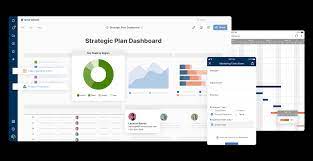Revolutionising Industries with Cutting-Edge Innovative Technology
Innovative Technology: Shaping the Future
Technology has always been at the forefront of human progress, driving innovation and shaping the way we live, work, and interact with the world around us. In today’s fast-paced digital age, innovative technology plays a crucial role in transforming industries, revolutionising processes, and pushing boundaries like never before.
The Impact of Innovation
From artificial intelligence and machine learning to Internet of Things (IoT) devices and blockchain technology, the landscape of innovation is vast and ever-expanding. These cutting-edge technologies are not just changing how businesses operate but are also influencing healthcare, education, transportation, and more.
Driving Efficiency and Productivity
One of the key benefits of innovative technology is its ability to drive efficiency and productivity. Automation tools streamline workflows, reducing manual tasks and allowing employees to focus on more strategic initiatives. Cloud computing enables seamless collaboration and data storage, empowering businesses to scale rapidly without significant infrastructure investments.
Fostering Creativity and Collaboration
Innovative technology is also fostering creativity and collaboration on a global scale. Virtual reality (VR) and augmented reality (AR) are revolutionising entertainment and gaming experiences, while also finding applications in industries such as architecture, design, and training. Remote collaboration tools are breaking down geographical barriers, enabling teams to work together seamlessly regardless of their physical location.
The Future of Innovation
As we look towards the future, the potential for innovative technology seems limitless. Emerging technologies such as quantum computing, 5G networks, biotechnology advancements hold promise for solving complex challenges in healthcare, sustainability, cybersecurity, and beyond. The fusion of technology with disciplines like artificial intelligence promises to unlock new possibilities that were once thought impossible.
Embracing Change
To thrive in this era of innovative technology, individuals and organisations must embrace change and adapt to new ways of thinking and working. Continuous learning is essential to stay abreast of technological advancements and harness their full potential. By embracing innovation and leveraging cutting-edge technologies responsibly, we can shape a future that is brighter, more connected, and more inclusive for all.
Exploring Innovative Technology: Key Questions and Insights on Industry Transformation and Ethical Considerations
- What is innovative technology?
- How is innovative technology transforming industries?
- What are the latest trends in innovative technology?
- How can innovative technology improve efficiency and productivity?
- What impact does artificial intelligence have on innovation?
- How is blockchain technology revolutionising business processes?
- What are the benefits of adopting Internet of Things (IoT) devices?
- How can virtual reality (VR) and augmented reality (AR) be used in various industries?
- What ethical considerations should be taken into account when implementing innovative technology?
What is innovative technology?
Innovative technology refers to groundbreaking advancements and novel solutions that push the boundaries of what is possible in various fields. It encompasses the development and application of new ideas, processes, or products that revolutionise existing practices, enhance efficiency, and drive progress. Innovative technology often involves the integration of cutting-edge tools such as artificial intelligence, machine learning, IoT devices, and blockchain to address complex challenges and create opportunities for growth and improvement. By constantly pushing the limits of creativity and ingenuity, innovative technology shapes the future by introducing transformative solutions that pave the way for a more advanced and interconnected world.
How is innovative technology transforming industries?
Innovative technology is revolutionising industries across the globe by introducing advanced solutions that streamline processes, enhance efficiency, and drive growth. From automation and artificial intelligence to data analytics and Internet of Things (IoT) devices, businesses are leveraging these cutting-edge technologies to optimise operations, improve decision-making, and deliver superior products and services to customers. By embracing innovative technology, industries are experiencing unprecedented levels of transformation, leading to increased competitiveness, accelerated innovation cycles, and the creation of new business models that cater to evolving market demands. The integration of these technologies is reshaping traditional industry landscapes, paving the way for a more interconnected, data-driven future where agility and adaptability are key drivers of success.
What are the latest trends in innovative technology?
The question “What are the latest trends in innovative technology?” is a common inquiry that reflects the dynamic nature of the tech landscape. Currently, several exciting trends are shaping the world of innovation. From the rise of artificial intelligence and machine learning applications across industries to the increasing integration of Internet of Things (IoT) devices in everyday life, technological advancements continue to redefine how we interact with and adapt to our environment. Additionally, developments in areas such as quantum computing, 5G networks, and sustainable technologies are paving the way for a future where innovation is not just about progress but also about creating a more sustainable and interconnected world. Stay tuned as these trends evolve and drive new possibilities for businesses and individuals alike.
How can innovative technology improve efficiency and productivity?
Innovative technology has the transformative power to enhance efficiency and productivity across various industries. By automating repetitive tasks, streamlining workflows, and providing real-time data insights, innovative technologies such as artificial intelligence, machine learning, and automation tools can significantly reduce manual labour and human error. Cloud computing enables seamless collaboration and data sharing, facilitating faster decision-making processes and increasing overall productivity. Additionally, advanced analytics tools help businesses identify trends, patterns, and opportunities that may have otherwise gone unnoticed, enabling them to make informed decisions that drive efficiency and enhance performance. Ultimately, by embracing innovative technology solutions, organisations can optimise their operations, empower their workforce, and achieve higher levels of efficiency and productivity.
What impact does artificial intelligence have on innovation?
Artificial intelligence (AI) significantly impacts innovation by enhancing the speed and efficiency of problem-solving across various industries. By automating complex processes and analysing vast amounts of data, AI enables businesses to gain insights and make informed decisions more rapidly than ever before. This capability fosters the development of new products and services tailored to meet evolving consumer demands. Additionally, AI-driven technologies such as machine learning and natural language processing are opening new avenues for creativity, allowing for the creation of personalised experiences in fields ranging from healthcare to entertainment. As AI continues to evolve, it is poised to drive further innovation by enabling breakthroughs that were previously unimaginable, ultimately transforming the way we live and work.
How is blockchain technology revolutionising business processes?
Blockchain technology is revolutionising business processes by introducing a secure, transparent, and decentralised way of recording and verifying transactions. By leveraging blockchain’s distributed ledger system, businesses can streamline operations, reduce costs, and enhance trust among stakeholders. Smart contracts embedded within blockchain networks automate agreements and transactions, eliminating the need for intermediaries and reducing the risk of fraud. The immutability of blockchain ensures that data cannot be altered or tampered with, providing a high level of security and integrity to business processes. Overall, blockchain technology is reshaping the way businesses conduct transactions, manage supply chains, and interact with customers, paving the way for a more efficient and trustworthy business ecosystem.
What are the benefits of adopting Internet of Things (IoT) devices?
The adoption of Internet of Things (IoT) devices brings a multitude of benefits across various sectors. IoT devices offer enhanced connectivity and real-time data monitoring, enabling businesses to make informed decisions swiftly. They streamline processes, improve operational efficiency, and reduce costs through automation and predictive maintenance. In the healthcare industry, IoT devices can facilitate remote patient monitoring and personalised care, leading to better health outcomes. Additionally, IoT devices enhance convenience and comfort in smart homes by enabling remote control of devices and energy management. Overall, embracing IoT technology opens up a world of opportunities for innovation, efficiency gains, and improved quality of life.
How can virtual reality (VR) and augmented reality (AR) be used in various industries?
Virtual reality (VR) and augmented reality (AR) have revolutionised various industries by offering immersive and interactive experiences that were once unimaginable. In the healthcare sector, VR is used for medical training, surgical simulations, and pain management, while AR enhances patient care through visualising complex medical data. In the education field, VR and AR technologies provide engaging learning experiences, allowing students to explore historical sites or conduct virtual experiments. In architecture and design, these technologies enable professionals to visualise projects in 3D, improving design accuracy and client communication. Moreover, in the retail industry, VR enhances the shopping experience with virtual try-ons and showroom simulations, while AR facilitates interactive product demonstrations. The potential applications of VR and AR across industries are vast, offering innovative solutions that enhance efficiency, creativity, and user engagement.
What ethical considerations should be taken into account when implementing innovative technology?
When implementing innovative technology, several ethical considerations must be taken into account to ensure that advancements benefit society as a whole without causing harm. Privacy is paramount, as new technologies often involve the collection and analysis of vast amounts of personal data. Organisations must ensure that data is handled transparently and securely, respecting individuals’ rights and consent. Additionally, the potential for bias in algorithms, particularly in artificial intelligence systems, necessitates rigorous testing and validation to prevent discrimination or unfair treatment. The impact on employment is another critical concern; while technology can enhance productivity, it may also displace jobs, requiring strategies for workforce retraining and support. Furthermore, accessibility should be considered to prevent a digital divide where only certain groups benefit from technological advancements. Lastly, environmental sustainability should guide the development and deployment of new technologies to mitigate any negative impacts on the planet. Addressing these ethical issues is crucial for fostering trust and ensuring that technology serves the greater good.





